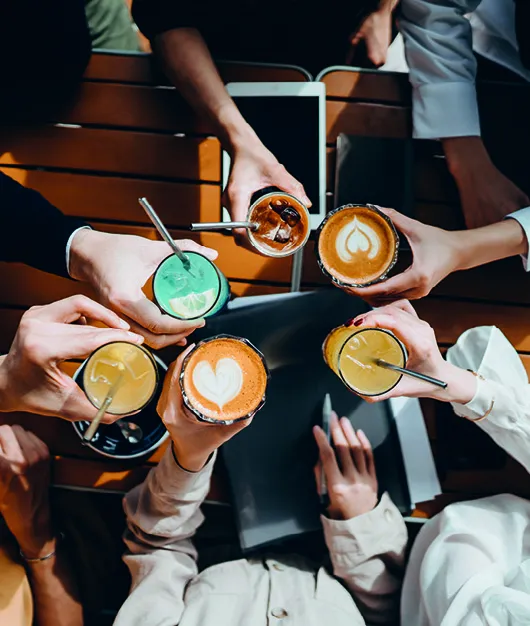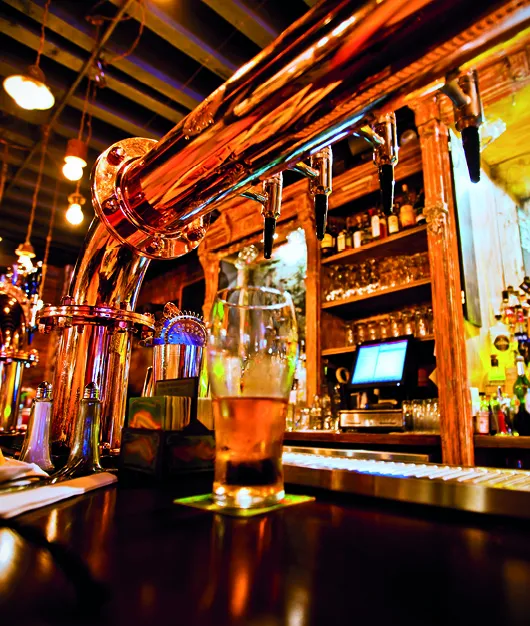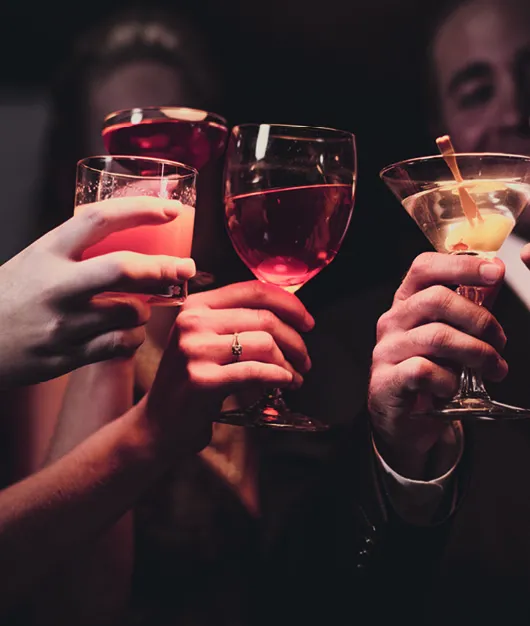What is the state of the beverage industry in 2024?
The 2024 Beverage Industry Report is a comprehensive study of 3,000 US consumers and 75 top beverage industry leaders that reveals crucial 2024 beverage trends including a shift towards healthier options and a decrease in alcohol consumption, largely driven by Gen Z and Millennials. It explores how industry leaders are pursuing AI-driven digitalization in route-to-market strategies and how prioritizing product innovation, personalized digital communications, and convenience can enhance consumer engagement.
See key insights below and download the report for complete insights.
For more information, specific data requests or media assets, or to reach the report’s authors, please contact us at sk-insights@simon-kucher.com.
Consumers opt for healthier drinks and less alcohol, primarily among younger generations.
- Seltzers and sparkling non-alcoholic beverages are soaring in popularity among nearly every type of consumer, with consumers citing an overall 16% increase in spend on the bubbly beverages. Fruit juices are also increasing in popularity (seen by some as healthy options). However, soft drinks and all types of alcohol – but spirits most of all – are seeing a decrease in popularity.
- Consumers are shifting from on-premise to at-home consumption: half of consumers (49%) say they are dining at home more and 36% say they are going out to bars and restaurants less. Consumers are also buying more drinks on the go and for workouts. Across the board consumers are spending within restricted budgets: cost-conscious options have grown in popularity at bars and restaurants and even at home.
- Consumers cite health (1st) and expense (2nd) as the top reasons they are cutting spend on beverages, and some are leaning away from alcoholic drinks, with Gen Z and Millennials demonstrating the greatest shift toward non-alcoholic and healthy beverages of any age group.
Beverage brands aiming to take advantage of the upswing in at-home and healthy consumption should focus on executing across a variety of pillars consumers are looking for: more economical pack sizes, hitting key shopper price points, and a focus on value channels (Mass Merch, Club, and Dollar).
Brands will find further opportunity in meal delivery apps and in convenience (where consumers increasingly buy their at-home meal beverages) and by focusing on in-store execution (including meal-adjacent placements and cross-category basket building programs).
Finally, untapped opportunity still exists in the on-premise market, but to capture this, brands will need to deliver elevated and unique out-of-home experiences that justify the extra cost of heading out to a bar or restaurant.

Increasingly sophisticated AI and advanced ordering methods are changing the way sales teams plan with and sell to retailers.
- Digitalization of the route-to-market has emerged as the top priority for beverage industry leaders in 2024. 71% of beverage leaders believe their route-to-market is already very or completely digitalized, and 60% of companies believe their recent work will place them ahead of their competitors (with large alcohol companies leading the way).
- As the race for competitive advantage heats up, 77% of retailers say they are currently using advanced order preparation methods (including tools informed by AI), and 87% say they expect to be within three years. Among distributors, 80% say they are using advanced models to gain an advantage today and 96% will be within three years.
- Some sales leaders are concerned about what this will mean for the brands they sell, and what it will mean for their own jobs. About a third of leaders believe there will soon be a need to reallocate and resize their sales teams. Sales leaders are working first to refocus and up-skill existing teams (e.g., new activities and training), with 50% of leaders believing there is a need to create new roles better suited to address opportunities in a more digital ecosystem.
As digital tools begin to disrupt the route-to-market, sales organizations must adapt quickly and confidently. Brands will have to identify the levers that allow them to stand out from their competitors. As one business leader reflected, “[it’s critical that] manufacturers ensure algorithms will include their brands.”

As new consumer engagement paths come to market, beverage brands must take advantage of the revolution in retail media and multi-channel engagement.
- 83% of beverage leaders believe the shopper experience and role of retail locations will change significantly in the next three years (or sooner). To win in this environment, beverage leaders plan to lean into innovative and unique products (59%) and about half (48%) will place a greater emphasis on convenience, including online shopping, ready-to-drink, and targeted baskets to attract shoppers. And 44% plan to take advantage of the digitalization of the shopper experience via mobile apps.
- New retail technologies will allow brands to engage more intimately with shoppers: 68% plan to target personalized in-app messages and 64% personalized emails, followed by loyalty programs (48%), promotions (45%), and exclusive offers (41%), among others.
- Beverage leaders expect the keys to winning in this new environment to be a combination of commercial levers. At the top of that list are re-aligning portfolio and brand strategy, reinforcing distributor management and capabilities, and redirecting trade terms and promotion strategy – all in service of better taking advantage of the array of new opportunities available to brands to engage more directly with their shoppers.
It’s currently unclear whether this shift in landscape will benefit incumbents or disruptors. On one hand, the top challenge beverage leaders cite in adapting to this new reality is internal bureaucracy in organization alignment and approvals processes. On the other hand, budget and resource constraints are also flagged as top challenges to making the pivot. Big or small, it seems that winners will emerge based on who is able to most quickly move their organization to action.

Our Experts
Kontakt
Nehmen Sie Kontakt zu uns auf, unser Team berät Sie gerne.





